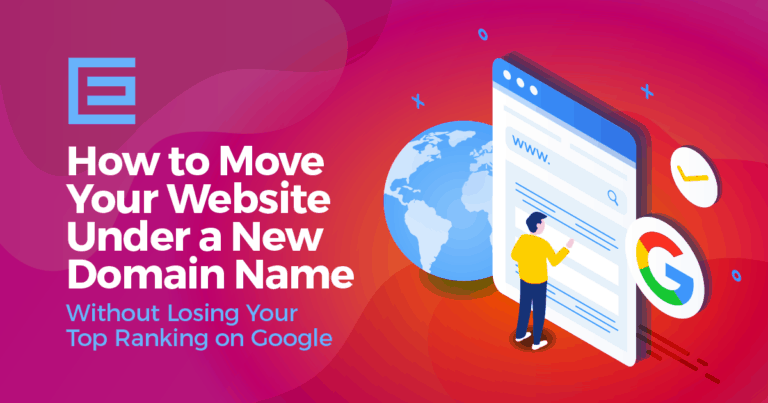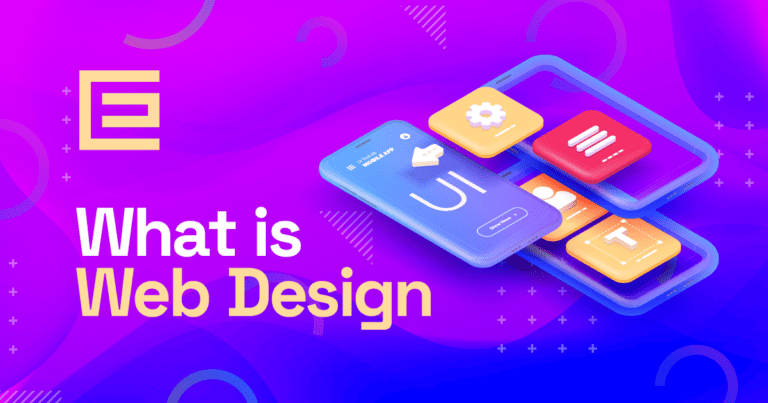Choosing between a native app and a web app for your project can feel like standing at a crossroads. It’s a decision that can shape the future of your business or idea in the digital world. On one hand, native apps, with their smooth performance and slick user interfaces, seem like a no-brainer for a top-notch user experience. On the other, the versatility and ease of access of web apps are hard to ignore. In this guide, we’re going to dive into the nitty-gritty of both options. Whether you’re a developer, a startup founder, or just someone fascinated by the ever-changing tech landscape, I’m here to walk you through everything you need to know about native and web apps. Let’s unravel this together and find the perfect fit for your digital needs. Welcome to our journey into the world of “Native App vs Web App” – let’s make this decision a little easier for you!
Understanding Native Apps
Definition and Characteristics
Native apps are a cornerstone in the mobile app landscape, offering a unique blend of performance and user experience tailored to specific platforms. Let’s delve into what sets them apart, focusing on their platform-specific development and their ability to leverage device hardware and software features.
Platform-Specific Development
At the heart of a native app’s identity is its platform-specific development. Unlike their web-based counterparts, native apps are developed exclusively for one platform, be it iOS, Android, or Windows. This means they are written in languages that are fully supported by these platforms: Swift or Objective-C for iOS, and Java or Kotlin for Android. This dedicated approach allows developers to deeply integrate their apps into the ecosystem of the chosen platform.
The platform-specific development of native apps is not just about adhering to technical standards. It’s about embracing the unique ethos and design language of each platform. For instance, an app designed for iOS will naturally align with Apple’s Human Interface Guidelines, while one for Android will resonate with Material Design principles. This leads to a more intuitive and seamless user experience, as the app behaves and feels like a natural extension of the device.
Access to Device Hardware and Software Features
Another defining characteristic of native apps is their access to a device’s hardware and software features. Since these apps are built for specific platforms, they can take full advantage of the latest technology offered by modern smartphones and tablets. This includes everything from the camera and GPS to the accelerometer and gyroscope.
For example, a native app can easily integrate with a device’s camera to offer advanced photographic capabilities or use the GPS system for precise location tracking. They can also tap into the device’s push notification system, providing real-time updates and interactions. This deep integration extends to software features as well, allowing native apps to utilize platform-specific APIs and services, such as Siri or Google Assistant, to enhance functionality and user engagement.
By leveraging these hardware and software capabilities, native apps can offer a more robust and dynamic user experience. They can perform complex tasks, handle high-performance requirements, and provide a level of sophistication that is often challenging to achieve in web apps. This makes them particularly suitable for applications that require intensive processing, sophisticated user interactions, or a high degree of reliability and responsiveness.
In summary, the platform-specific development and access to device hardware and software features are what make native apps stand out. They offer a tailored, efficient, and immersive experience that aligns closely with the user’s device, leading to higher performance and enhanced user satisfaction. As we continue to explore the world of app development, these aspects of native apps play a pivotal role in shaping the choices of developers and businesses alike.
Advantages of Native Apps
Native apps, designed specifically for certain mobile operating systems, offer a range of benefits that set them apart in the competitive app market. Let’s explore the key advantages they bring to the table, including enhanced performance, a better user experience, and access to full device features.
Enhanced Performance
One of the most significant advantages of native apps is their enhanced performance. Built specifically for a particular platform, these apps can optimize their performance to the fullest. They are faster and more efficient, as they are written in languages that are directly supported by the ecosystem of the device. This results in quicker load times and smoother operations, especially in handling complex tasks or graphics-intensive applications.
The performance edge of native apps is particularly noticeable in gaming and high-demand applications, where every millisecond counts. By harnessing the full power of the device’s processor and memory, native apps can deliver a level of performance that web apps, which rely on a browser, typically cannot match.
Better User Experience
Native apps also excel in providing a better user experience. Since they are designed with the specific guidelines and standards of the platform in mind, they offer a more intuitive and cohesive experience. Users find these apps more natural to navigate and interact with, as they align with the interface they are already accustomed to on their devices.
This tailored user experience is not just about aesthetics; it extends to the functionality of the app. Native apps can seamlessly integrate with the device’s features and capabilities, such as using gestures for navigation, which makes the user feel more connected and engaged with the app. The familiarity and fluidity of these interactions contribute significantly to user satisfaction and retention.
Access to Full Device Features
Another key advantage of native apps is their ability to access and utilize the full range of features available on the device. This includes hardware components like the camera, microphone, accelerometer, and GPS, as well as software functionalities like push notifications and integration with other apps and services on the device.
This access allows native apps to offer more advanced and interactive features. For instance, a native camera app can provide various filters and editing tools by directly accessing the device’s camera hardware. Similarly, fitness apps can track and analyze movement more accurately using the device’s built-in sensors. The ability to tap into these features not only enhances the functionality of the app but also opens up possibilities for more innovative and engaging user experiences.
In conclusion, the advantages of native apps – enhanced performance, better user experience, and full access to device features – make them a powerful choice for app developers and businesses. These benefits contribute to creating apps that are not only efficient and fast but also deeply integrated and engaging, offering users a superior experience on their devices.
Disadvantages of Native Apps
While native apps offer numerous advantages, it’s important to acknowledge their limitations. Understanding these drawbacks is crucial for developers and businesses when deciding on the right approach for their app development. Let’s explore the key disadvantages of native apps, including higher development costs, platform dependency, and longer development time.
Higher Development Costs
One of the most significant drawbacks of native apps is their higher development costs. This stems from the need for specific skill sets and tools for each platform. For instance, developing an app for iOS requires expertise in Swift or Objective-C, while Android apps demand proficiency in Java or Kotlin. This means that if you want your app to be available on both platforms, you essentially need to create two separate apps, which doubles the effort and resources.
Additionally, the cost of maintaining and updating the app also increases. Each platform has its own release cycles and updates, requiring ongoing attention and investment. This can be a substantial financial burden, especially for small businesses or startups with limited budgets.
Platform Dependency
Platform dependency is another notable disadvantage of native apps. When you develop a native app, it is tied to the specific platform for which it was developed. This means that any changes or updates in the platform’s standards or guidelines can directly impact your app. For instance, if Apple or Google introduces a new hardware feature or software update, the app may need to be modified to maintain compatibility and functionality.
This dependency not only affects the maintenance of the app but also its scalability. Expanding the app to other platforms requires additional development from scratch, which can be time-consuming and costly. This limitation can hinder the reach of the app, especially in a diverse market where users are spread across various platforms.
Longer Development Time
Lastly, native apps typically have a longer development time compared to web or hybrid apps. Since they are developed specifically for each platform, more time is needed to ensure that they meet the respective guidelines and standards. This includes not only the initial development phase but also the testing and deployment stages. Each version of the app must be thoroughly tested on its respective platform to ensure optimal performance and user experience.
The longer development time can be a significant issue in a fast-paced market where speed to launch can be critical. It can delay the app’s entry into the market, potentially missing out on timely opportunities or allowing competitors to gain an advantage.
In summary, while native apps offer superior performance and user experience, they come with their own set of challenges, including higher development costs, platform dependency, and longer development time. These factors need to be carefully considered when planning and developing a mobile app, ensuring that the chosen approach aligns with the project’s goals, budget, and timeline.
Understanding Web Apps
Definition and Characteristics
In the world of app development, web apps represent a unique category that blends the accessibility of traditional websites with the functionality of native apps. Let’s delve into the defining aspects of web apps, focusing on their browser-based operation and platform independence.
Browser-Based Operation
The cornerstone of a web app’s functionality is its browser-based operation. Unlike native apps that require downloading and installation, web apps run directly in a web browser. This means users can access them via a web URL, making them remarkably easy to distribute and access. The browser acts as a universal gateway, eliminating the need for platform-specific development.
This approach offers several advantages. Firstly, it ensures immediate accessibility – users don’t have to go through the process of downloading an app from an app store. They can simply click a link or type in a URL and start using the app right away. Secondly, it simplifies the update process. Any updates or changes made to the web app are instantly available to all users, without requiring them to download updates manually.
Platform Independence
Another defining characteristic of web apps is their platform independence. Since they run in web browsers, they are not tied to any specific operating system or device. This universality means that the same web app can operate on various devices, be it a smartphone, tablet, or desktop, regardless of the underlying platform, whether it’s iOS, Android, or Windows.
Platform independence is a significant advantage in terms of reach and scalability. Developers can create a single version of a web app that works across multiple platforms, saving time and resources that would otherwise be spent on developing and maintaining separate versions for each platform. This also ensures a consistent user experience across different devices, which is crucial for maintaining brand consistency and user satisfaction.
In summary, the browser-based operation and platform independence are key characteristics that define web apps. They offer a level of accessibility and versatility that is hard to achieve with native apps. As we continue to explore the intricacies of app development, these features of web apps play an essential role in shaping the strategies of businesses and developers in the digital landscape.
Advantages of Web Apps
Web apps have become increasingly popular in the digital world, offering a range of benefits that make them an attractive option for businesses and developers. Let’s explore the key advantages of web apps, including lower development costs, ease of maintenance and updates, and broader accessibility.
Lower Development Costs
One of the most appealing advantages of web apps is their lower development costs compared to native apps. Since web apps are developed using standard web technologies like HTML, CSS, and JavaScript, they do not require specialized skills for different platforms. This universality significantly reduces the need for multiple development teams and resources, as the same codebase can be used across various platforms and devices.
Moreover, the tools and frameworks used in web app development are often open-source and widely available, which further reduces development costs. This cost-effectiveness makes web apps particularly appealing for small businesses or startups with limited budgets, allowing them to create a functional and professional online presence without a hefty investment.
Easier to Maintain and Update
Another significant advantage of web apps is their ease of maintenance and updates. Unlike native apps, which require users to download updates from an app store, web apps can be updated directly on the server. This means that any changes or improvements made to the web app are immediately available to all users without any action required on their part.
This streamlined update process not only simplifies maintenance for developers but also ensures that all users have access to the latest version of the app. It eliminates the fragmentation and inconsistency that can occur with native apps, where users might be using different versions of the app. For businesses, this means a more consistent and controlled user experience and for users, it means always having access to the latest features and security enhancements.
Broader Accessibility
Web apps offer broader accessibility, making them available to a wider audience. Since they run in web browsers, they can be accessed on any device with an internet connection, regardless of the operating system or hardware specifications. This universal accessibility is particularly beneficial in today’s diverse tech environment, where users access digital content on a multitude of devices, from smartphones to tablets to desktop computers.
This broad reach is not just limited to different devices but also includes users with varying levels of internet connectivity. Web apps can be designed to be lightweight and efficient, ensuring that they load quickly and perform well even on slower internet connections. This inclusivity enhances the user experience and expands the potential user base, making web apps an ideal solution for businesses aiming to reach a diverse and global audience.
In summary, the advantages of web apps – lower development costs, easier maintenance and updates, and broader accessibility – make them a compelling choice for many businesses and developers. These benefits align well with the needs of a rapidly evolving digital landscape, where accessibility, cost-effectiveness, and user convenience are key.
Disadvantages of Web Apps
While web apps offer several advantages, they also come with certain limitations that can impact their effectiveness and user experience. Understanding these disadvantages is crucial for businesses and developers when considering web apps for their digital solutions. Let’s delve into the key drawbacks of web apps, including limited access to device features, dependency on internet connection, and potentially lower performance.
Limited Access to Device Features
One of the significant limitations of web apps is their restricted access to device-specific features. Unlike native apps, which can directly interact with the hardware and software of a device, web apps operate within the confines of a web browser. This limitation means they cannot fully utilize features like the camera, GPS, accelerometer, and other sensors to their fullest potential.
This restricted access can hinder the functionality and overall user experience of the web app. For instance, a web app might not be able to offer advanced camera functionalities or seamless integration with other apps and services on the device. This can be a critical drawback for applications that rely heavily on these features, such as augmented reality apps, advanced gaming apps, or apps that require detailed location tracking.
Dependent on Internet Connection
Another drawback of web apps is their dependency on a stable internet connection. Since web apps are hosted on a server and accessed through a browser, they require an active internet connection to function. This reliance can be a significant issue in areas with poor connectivity or for users who are frequently on the move and might not always have access to a reliable network.
This internet dependency not only affects accessibility but also impacts the app’s performance during periods of low connectivity. Users might experience slow loading times, lag, or even inability to access the app, which can lead to frustration and a negative perception of the app.
Potentially Lower Performance
Web apps can also suffer from potentially lower performance compared to native apps. Since they run in a web browser, they are subject to the limitations and performance constraints of the browser. This can result in slower response times, especially for complex or resource-intensive applications.
Additionally, the performance of web apps can be affected by various factors such as the user’s device capabilities, browser type, and internet speed. While advancements in web technologies like HTML5 and JavaScript frameworks have significantly improved the performance of web apps, they still may not match the speed and smoothness of a well-optimized native app, particularly for graphics-intensive applications or those requiring high processing power.
In conclusion, while web apps offer the benefits of cross-platform compatibility and ease of access, they also come with disadvantages like limited access to device features, dependency on internet connection, and potentially lower performance. These factors need to be carefully weighed when deciding on the type of app to develop, ensuring that the chosen solution aligns with the intended user experience and functionality requirements.
Comparative Analysis
Performance Comparison
When deciding between native and web apps, understanding how they stack up in terms of performance is crucial. This comparative analysis focuses on two key aspects: speed and efficiency, and the user interface and experience. These factors play a significant role in user satisfaction and the overall success of the app.
Speed and Efficiency
Speed and efficiency are important in the user experience of an app. Native apps generally have the upper hand in this area. Since they are developed for specific platforms, they can be optimized to leverage the device’s hardware, resulting in faster and more efficient performance. This is particularly evident in apps that require intensive data processing or graphics rendering, like gaming or video editing apps. Native apps can directly access the device’s CPU and memory, leading to quicker load times and smoother in-app interactions.
Web apps, on the other hand, tend to be slower and less efficient in comparison. They rely on web browsers to run, which can add an extra layer of processing. This can result in slower response times, especially for complex applications. However, advancements in web technologies and browser capabilities have narrowed this gap significantly. Modern web apps, especially those built with advanced frameworks and optimized code, can offer performance that approaches that of native apps, though they may still lag in more resource-intensive tasks.
User Interface and Experience
The user interface (UI) and overall user experience (UX) are also critical in comparing native and web apps. Native apps typically provide a more seamless and intuitive user experience. They are designed with the specific UI guidelines and standards of the platform in mind, ensuring that the app feels like a natural part of the device’s ecosystem. This results in an interface that is familiar to the user, with gestures and interactions that are consistent with other native applications on the device.
Web apps, while versatile, often face challenges in matching the UI and UX quality of native apps. Being platform-independent, they need to be designed to work across various devices and screen sizes, which can lead to compromises in the UI design. However, with responsive design techniques and a focus on user-centric design principles, web apps can offer a highly satisfactory user experience. The key is to ensure that the web app is intuitive, responsive, and accessible across all devices, providing a consistent and engaging user experience.
In summary, in the performance comparison between native and web apps, native apps typically excel in speed and efficiency, offering a more optimized and smooth performance. In terms of UI and UX, native apps also tend to have an edge due to their platform-specific design. However, web apps have made significant strides in these areas, offering competitive performance and user experience, especially for less resource-intensive applications. The choice between the two should be guided by the specific needs and goals of the app project.
Cost and Development
When evaluating the choice between native and web apps, a critical aspect to consider is the cost associated with their development and maintenance. This includes not only the initial investment but also the ongoing expenses to keep the app updated and functional. Additionally, the aspect of cross-platform compatibility plays a significant role in determining the overall development strategy and cost implications.
Initial Development and Ongoing Maintenance
The initial development cost of native apps is typically higher than that of web apps. This is due to the need for specialized skills for each platform (iOS, Android, etc.), and the requirement to develop multiple versions of the app if targeting more than one platform. The development process for native apps is often more complex and time-consuming, involving detailed aspects of the specific platform’s hardware and software capabilities.
Ongoing maintenance for native apps can also be more costly. Each update or change needs to be made separately for each platform version, and then the updated versions must be resubmitted to their respective app stores for approval. This process not only adds to the cost but also to the time it takes for updates to reach users.
Web apps, in contrast, generally have lower initial development costs. They are built using standard web technologies that work across all platforms, eliminating the need for platform-specific development. This universality significantly reduces the need for multiple development teams and resources, as the same codebase is used across various platforms and devices.
The maintenance of web apps is also simpler and more cost-effective. Updates can be deployed directly to the web server, making them instantly available to all users without the need for individual updates through app stores. This streamlined process reduces both the time and cost associated with maintaining and updating the app.
Cross-Platform Compatibility
Cross-platform compatibility is another crucial factor in the cost and development of apps. Native apps, while offering optimized performance for each platform, require separate development efforts for each operating system. This means developing and maintaining multiple codebases, which can significantly increase both the initial and ongoing costs.
Web apps shine in this aspect due to their inherent cross-platform nature. They are built to be platform-agnostic, running in web browsers on any device regardless of the operating system. This eliminates the need for multiple versions of the app, significantly reducing both development and maintenance costs.
Moreover, the rise of progressive web apps (PWAs) and responsive design has further enhanced the cross-platform capabilities of web apps, allowing them to provide a near-native experience on various devices with a single development effort. This makes web apps an attractive option for businesses looking to reach a wider audience across different platforms without the high costs associated with native app development.
When considering cost and development, web apps generally offer a more economical and efficient solution, especially for projects targeting multiple platforms. However, for applications requiring in-depth integration with device capabilities or those targeting a specific platform, the higher cost of native app development might be justified. The decision ultimately depends on the specific requirements and goals of the app project.
Use Cases and Suitability
When it comes to choosing between native and web apps, understanding the ideal scenarios and industry-specific preferences for each type is crucial. This understanding helps in making informed decisions that align with business goals and user needs. Let’s explore the best use cases and suitability for both native and web apps.
Best Scenarios for Each Type
Native Apps: Native apps are particularly well-suited for applications that require high performance and direct access to a device’s hardware. This includes:
- Gaming Apps: For games that demand high-end graphics and smooth performance, native apps are the preferred choice. They can fully leverage the device’s GPU and ensure an immersive gaming experience.
- Utility Apps: Apps that need deep integration with the device’s core functionalities, like camera, GPS, or accelerometer, benefit from being native. This includes camera apps, GPS-based navigation apps, and fitness trackers.
- Complex Business Applications: For applications that handle complex calculations or data processing, native apps provide the necessary speed and efficiency.
Web Apps: Web apps are ideal for scenarios where accessibility and cross-platform compatibility are key. They are best suited for:
- Content-Focused Applications: For platforms focusing on content delivery, such as news sites or educational portals, web apps offer easy accessibility without the need for downloading an app.
- E-commerce Platforms: Web apps allow easy updates and maintenance, which is crucial for e-commerce platforms that frequently update their product listings and offers.
- Corporate Websites: For businesses looking to provide a seamless experience across desktop and mobile without developing a separate app, web apps are a cost-effective solution.
Industry-Specific Preferences
Different industries often have distinct preferences based on their specific requirements:
- Tech and Gaming Industry: Tends to favor native apps due to the need for high performance and advanced graphics capabilities.
- Retail and E-commerce: Often opt for web apps or progressive web apps (PWAs) to reach a broader audience without the barrier of app installation.
- Banking and Finance: Usually prefer native apps for their enhanced security features and ability to offer a more robust, feature-rich user experience.
- Media and Entertainment: Web apps are commonly used for streaming services and news platforms due to their ease of access and cross-platform nature.
- Education and E-Learning: Both native and web apps are used, depending on the need for offline access (native) or broad accessibility (web).
In summary, the choice between native and web apps depends largely on the specific use case and industry requirements. Native apps are more suitable for performance-intensive applications and those requiring deep integration with device capabilities. Web apps, on the other hand, are ideal for platforms prioritizing accessibility and cross-platform compatibility. Understanding these nuances helps in selecting the right approach that aligns with the intended purpose and target audience of the app.
Emerging Trends and Future Outlook
In the ever-changing world of app development, it’s super important to keep up with the latest trends and have a good guess at what’s coming next if you want to stay ahead of the game. In this part, we’re going to dive into the newest tech stuff that’s shaking up the app world and take a look at what’s hot in the market right now, as well as some predictions for what the future might hold. Let’s get into it!
Technological Advancements
Impact of New Technologies on App Development
The landscape of app development is continually reshaped by technological advancements, each bringing new possibilities and challenges. Key developments include:
- Artificial Intelligence and Machine Learning: AI and ML are revolutionizing app development, enabling more personalized user experiences and smarter functionalities. From predictive analytics in e-commerce apps to AI-driven content curation in media apps, these technologies are enhancing app capabilities.
- Augmented Reality (AR) and Virtual Reality (VR): AR and VR technologies are not just for gaming anymore. They’re being integrated into various types of apps, offering immersive experiences in retail, education, and even healthcare.
- Internet of Things (IoT): The expansion of IoT is leading to a surge in apps that can interact with connected devices. This integration is particularly evident in home automation, health monitoring, and industrial applications.
- 5G Technology: The continual adaption of 5G is set to significantly boost app performance with faster speeds and lower latency. This advancement will enhance the functionality of data-intensive applications like streaming and gaming.
- Cross-Platform Development Tools: Tools like Flutter and React Native are making it easier to develop apps that perform well across multiple platforms, reducing development time and costs.
These technological advancements are not only expanding the capabilities of apps but also raising user expectations, pushing developers to innovate continually.
Market Trends
Current Market Preferences and Future Predictions
The app development market is influenced by evolving user preferences and technological capabilities. Current trends and future predictions include:
- Preference for Personalization: Users now expect apps to offer personalized experiences, tailored to their preferences and behaviors. This trend is likely to grow, with apps using data analytics and AI to customize content and functionalities.
- Rise of Progressive Web Apps (PWAs): PWAs are gaining popularity due to their hybrid nature, combining the best of web and native apps. They offer offline capabilities, fast loading times, and a seamless user experience, making them increasingly preferred by businesses.
- Focus on Privacy and Security: With growing concerns about data privacy, apps that prioritize user security and data protection are becoming more favored. This trend is expected to intensify, with stricter privacy regulations and user demands for transparency.
- Growth in Health and Wellness Apps: The health and wellness sector has seen a surge in app development, a trend accelerated by the COVID-19 pandemic. This market is expected to continue growing, with apps focusing on mental health, fitness, and telemedicine.
- Expansion of E-commerce and Mobile Payments: The convenience of mobile shopping and payments continues to drive the growth of e-commerce apps. Future developments are likely to focus on enhancing user experience and integrating advanced payment technologies.
In conclusion, the future of app development is poised to be shaped by these technological advancements and market trends. Developers and businesses need to stay informed and adaptable to navigate this evolving landscape successfully. The ability to anticipate and respond to these changes will be key to creating successful and relevant apps in the years to come.
FAQs
What are the Main Differences Between Native and Web Apps?
The primary differences between native and web apps lie in their development approach, performance, and device integration.
- Development Approach: Native apps are developed specifically for one platform (iOS or Android) using platform-specific languages. Web apps, on the other hand, are developed using standard web technologies and are accessible through web browsers on any device.
- Performance and Device Integration: Native apps generally offer better performance and can directly access and utilize a device’s hardware and software features. Web apps, while more flexible and easier to maintain, may have limited performance and access to device features compared to native apps.
Which is More Cost-Effective to Develop: a Native App or a Web App?
- Initial Development Costs: Web apps are typically more cost-effective to develop initially due to their use of standard web technologies and single development process for all platforms.
- Maintenance Costs: Web apps also tend to have lower ongoing maintenance costs, as updates can be deployed directly to the web server and do not require submission to app stores.
Can Web Apps Perform as Well as Native Apps?
- Performance Factors: While web apps have made significant advancements, native apps still generally lead in terms of performance, especially for resource-intensive tasks and high-end graphics.
- Technological Improvements: However, with the evolution of web technologies and browser capabilities, web apps are increasingly closing the performance gap, offering efficient and effective solutions for many use cases.
How Do Updates Work for Native Apps vs. Web Apps?
- Native Apps: Updates for native apps need to be developed and tested for each platform separately. Users must download these updates from the app store to get the latest version.
- Web Apps: Web app updates are deployed directly to the server, making them instantly available to all users without the need for manual downloading.
Which Type of App is Better for User Engagement?
- User Experience: Native apps often lead in user engagement due to their optimized performance, better integration with device features, and ability to work offline.
- Accessibility: However, web apps offer broader accessibility and ease of use, which can also contribute positively to user engagement, especially for content-focused services and e-commerce platforms.
In summary, while native and web apps each have their unique strengths and weaknesses, the choice between them depends on specific project requirements, target audience, and budget constraints. Understanding this can help businesses and developers make more informed decisions in their app development journey.
Tags: Web Design







